#Thutmose III
Text
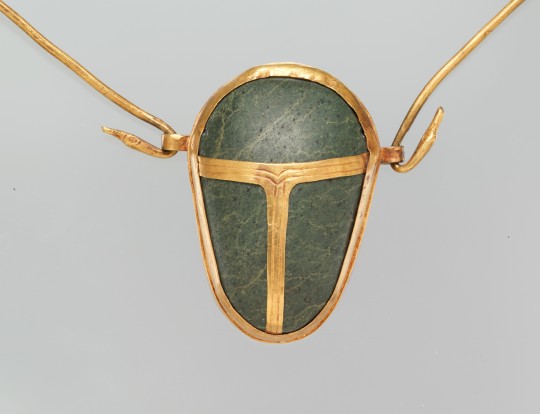
Ancient Egyptian heart amulet (gold and green schist) of one Manhata. Artist unknown; ca. 1479-1425 BCE (reign of Thutmose III, 18th Dynasty, New Kingdom). From the Tomb of the Three Foreign Wives of Thutmose III at Wadi Gabbanat el-Qurud, Thebes; now in the Metropolitan Museum of Art.
#art#art history#ancient art#Egypt#Ancient Egypt#Egyptian art#Ancient Egyptian art#Egyptian religion#Ancient Egyptian religion#kemetic#Thutmose III#18th Dynasty#New Kingdom#jewelry#jewellery#pendant#amulet#metalwork#gold#goldwork#schist#Egyptian Thebes#Metropolitan Museum of Art
687 notes
·
View notes
Text


~ Finger stall.
Period: New Kingdom, Dynasty 18; reign of Thutmose III
Date: ca. 1479–1425 B.C.
Place of origin: Egypt, Upper Egypt, Thebes, Wadi Gabbanat el-Qurud, Wadi D, Tomb of the Three Foreign Wives of Thutmose III
Medium: Gold
#ancient#ancient art#history#museum#archeology#ancient egypt#ancient sculpture#ancient history#archaeology#egyptology#egyptian#egypt#finger stall#finger#18th dynasty#new kingdom#thutmose iii#thebes#ca. 1479 b.c.#ca. 1425 b.c.#gold
457 notes
·
View notes
Text

Head of Hatshepsut or Thutmose III
New Kingdom, mid 18th Dynasty, ca. 1479-1458 BC.
Now in the Neues Museum, Berlin. ÄM 34431
116 notes
·
View notes
Text
Royal tomb discovered near Luxor dates to time when female pharaoh co-ruled ancient Egypt

Archaeologists in Egypt have discovered a 3,500-year-old royal tomb near Luxor. The tomb was likely constructed at a time when Hatshepsut, a female pharaoh, co-ruled ancient Egypt.
"Partial inscriptions and ceramic evidence suggest this was constructed during the joint-reign of Thutmose III and Hatshepsut," archaeologists said in a statement.
The tomb was excavated by a team of archaeologists from the Ministry of Tourism and Antiquities and the New Kingdom Research Foundation mission, which is affiliated with the MacDonald Institute for Archaeological Research at the University of Cambridge. The team found the tomb in October 2022 while exploring an area near Luxor called the Wadi Gabbanat el-Qurud, which is located near the Valley of the Kings. Read more.
442 notes
·
View notes
Text
Nestled amidst the lush greenery of Central Park, Cleopatra's Needle stands as the oldest outdoor monument in New York City. How then did this ancient Egyptian obelisk find itself in such an unlikely location?
30 notes
·
View notes
Text
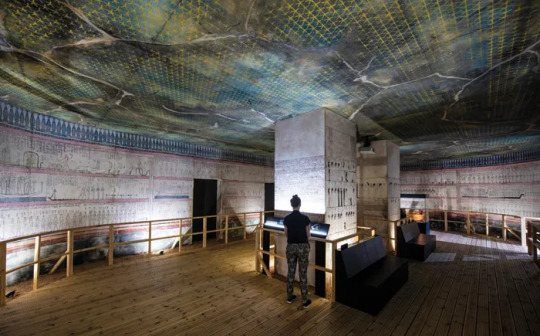
Starry sky ceiling within the burial chamber of Thutmose III.
228 notes
·
View notes
Text

Anyways FUCK Thutmose III
#historical memes#history#history memes#meme#memes#ancient history#historical#ancient egypt#Egypt#egyptian history#hatshepsut#pharaohs#pharaoh#thutmose iii
232 notes
·
View notes
Text
I wonder what led them to identify this as a rest house. It's on the way into the Levant, so it makes sense, but specifically what was it?
6 notes
·
View notes
Text
ok but is it really Faience Friday without a scarab?
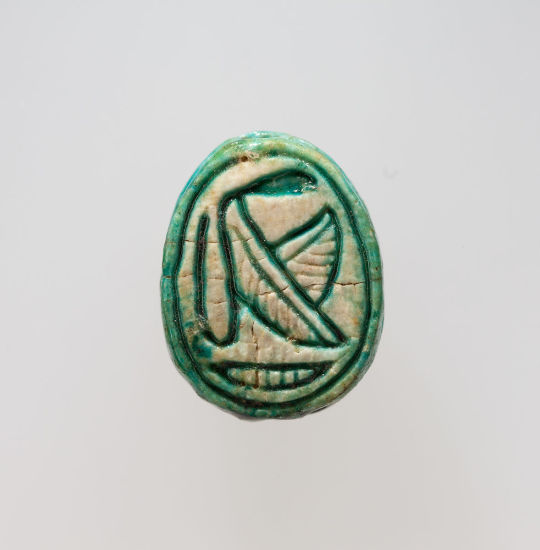
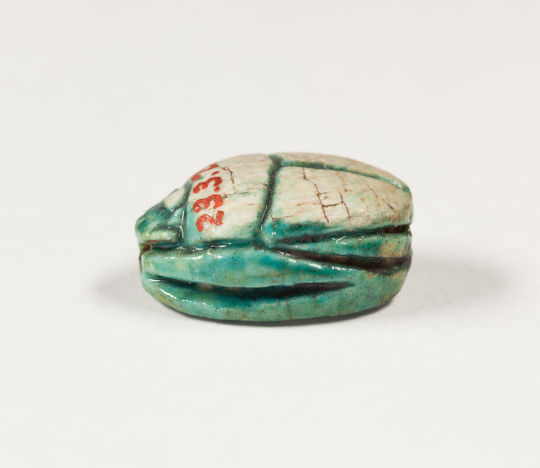
look at this wee dude
127 notes
·
View notes
Text
Amenhotep II and Rajendra Chola I
There are some similarities between Pharoah Hatshepsut and Ko-Parakesari Uttama Cholan.
Both became rulers during turbulent times.
In Chola country, there were some succession issues that are still unknown to us and a young heir (Aditha Karikalan) and the king (Parantaka II, Sundara Cholan) died back to back.
In Egypt, Thutmose II was a physically and mentally weak ruler who died young. His sister-wife (yes, incest 😫) and stepmother of his infant son Thutmose III, Hatshepsut, became the baby's co-regent and later independent King. She died when Thutmose III was 24.
Both stabilised the economies of their states and led administrative reforms.
They groomed their heirs very efficiently. Hatshepsut's stepson Thutmose the Great and Uttama Cholan's nephew Rajaraja the Great would go on to become extremely successful rulers.
Amenhotep II and Rajendra Cholan, the successors of these Kings, would try to malign the reputation of Hatshepsut and Uttama Cholan.
When he was made the co-regent at the end of his father's reign, Amenhotep II chiseled out or replaced Hatshepsut's cartouches (royal seal), destroyed pharonic statues and covered up her monuments. Rajendra Cholan's Thiruvalangadu copper plates say that "paternal uncle (Uttama Cholan) coveted his (i.e., Arunmolivarman's) dominions".
Why did these kings do it? Didn't Hatshepsut and Uttama Cholan bring their fathers (possibly Rajendran too) up and train them for well? If they were problematic, couldn't Thutmose III and Rajaraja I have outed them from power? Arulmozhi Varman was supposedly so beloved that people were begging him to become the king. Hatshepsut and probably Uttama too placed the army under the command of their heirs.
At the same time, we don't have any reason to believe that Hatshepsut and Uttama weren't nice and their successors were anything but respectful. Thutmose was actually really fond of his stepmother (which was ofc covered up Amenhotep). Rajarajan named his son Maduranthakan. We will revisit this at the end.
It is interpreted that the reasons weren't troubled past or personal relationships. It is the future, the legacy. It comes across as extremely conceited and arrogant but kings placed a lot of importance on their lineage. It is the sole thing that differentiated a random talented person from the king. Establishing a line of succession was only second to having the support of the army. If they didn't know much about ancestors or if they were unremarkable, kings would even claim the legacy of gods and mythological heroes.
By excluding Hatshepsut from the list of kings, Amenhotep established himself and his children as the legitimate successors of the throne.
Ahmose I - Amenhotep I- Thutmose I - Thutmose II - Hatshepsut - Thutmose III - Amenhotep II - Thutmose IV - Amenhotep III . . .
. . . you get the idea.
Similarly, by setting a narrative that the Chola crown always belonged to his father who magnanimously bestowed it upon the uncle temporarily, Rajendran ensured that he or his successors won't be troubled by Uttama's line.
Amenhotep and Rajendran didn't bear any personal grudge against Hatshepsut or Uttama.
Though Amenhotep tried to erase proof of Hatshepsut's reign as an independent king, her statues and inscriptions as the King's daughter, Chief Priestess of Amun and the Great Royal Wife were left intact. In fact he stopped those attempts too, immediately after he consolidated his rule.
Uttama Cholan is praised as an ideal man and king even in Thiruvalangadu plates and other inscriptions don't say anything bad about him.
Applying (his) mind to (the devotion of) Sarva (Siva), utilising (his) wealth in the act of performing his worship (employing) all (his) retinue in the construction of houses (i.e., temples) for him, and directing (his) subjects to (regularly) perform his festive processions, (showing his) wrath (only) in the killing of enemies and (distributing his) riches among virtuous Brahmanas, that king (Madhurantaka) bore on (his) broad shoulders, the (weight of the) earth.
Esalam copper plate, which was made at least after 25 years of rule (total reign 30 years).
Madhurantaka [Uttama], who wanted to re-establish on earth the auspicious path of justice that has slipped owing to the power of Kali.
But the story doesn't end here.
Sanskrit introduction of Leiden Plates aka Anaimangalam plates which is assumed to have been added later in Rajendran's reign praises him even more.
When that chief of kings went to heaven, the son of Gandaraditya, King Madhurantaka, he, of powerful arms and famous as Mahendran, protected the earth which had the ocean for its girdle.
The curious factor to be noticed here is that this grant doesn't mention the titles of either kings. Uttaman is mentioned as Maduranthakan and Rajarajan's son isn't Rajendran, Mummudi Cholan, Gangaikondan, or Kadaram Kondan- he is just another Maduranthakan. This might be the rare occasion of humility we see in him.
@willkatfanfromasia
@mizutaama
@vibishalakshman
@ambidextrousarcher
#ponniyin selvan#ponniyin selvan 2#arulmozhi#chola dynasty#rajaraja chola#Rajendrachola#uttamacholan#Uttamachola#Maduranthakan#ancient egypt#hatshepsut#Amenhotep ii#thutmose iii
18 notes
·
View notes
Photo
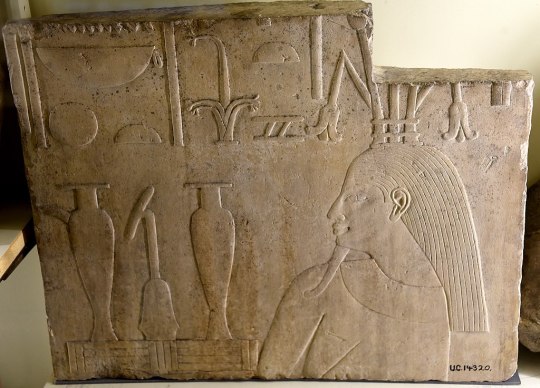
Limestone slab showing the Nile god Hapi. From the foundations of the temple of Thutmose III at Koptos.
98 notes
·
View notes
Text
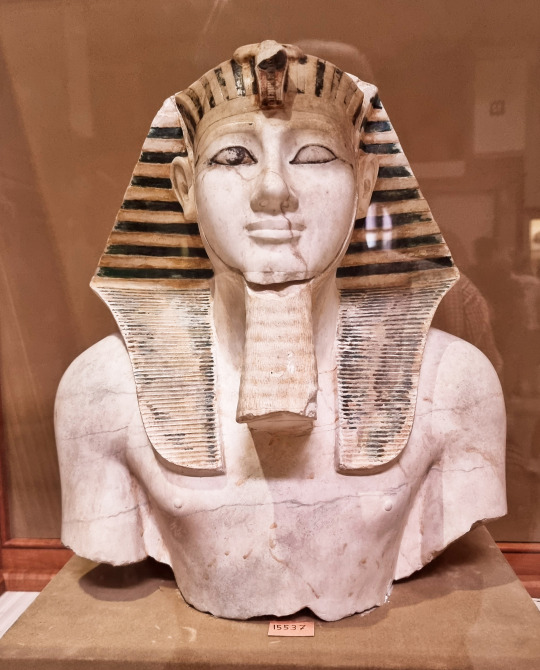
Partial statue of the 18th Dynasty pharaoh Thutmose III (r. 1479-1425 BCE). Found at Deir el-Bahri; now in the Egyptian Museum, Cairo. Photo credit: Prof. Mortel/Wikimedia Commons.
#art#art history#ancient art#Egypt#Ancient Egypt#Egyptian art#Ancient Egyptian art#18th Dynasty#New Kingdom#Thutmose III#statue#sculpture#portrait sculpture#Deir el-Bahri#Egyptian Museum Cairo
138 notes
·
View notes
Text

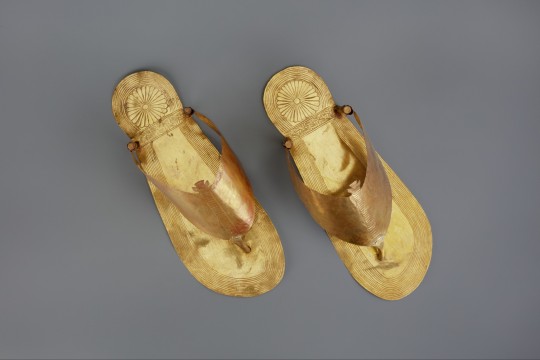

~ Sandals.
Period: New Kingdom, 18th Dynasty; Reign of Thutmose III
Date: ca. 1479–1425 B.C.
Place of origin: Egypt, Thebes, Wadi Gabbanat el-Qurud, Wadi D, Tomb of the Three Foreign Wives of Thutmose III
Medium: Gold sheet
#ancient#ancient art#history#museum#archeology#ancient egypt#ancient history#archaeology#egyptian#egypt#egyptology#sandals#gold#new kingdom#18th dynasty#thutmose iii#ca. 1479 b.c.#ca. 1425 b c.
1K notes
·
View notes
Text

Thutmose III as a Sphinx
This finely executed representation of Thutmose III as a sphinx is made of extremely hard stone. The transition between the head of the king and the powerful feline body has been masked by the nemes headdress and the stylized lion’s mane which forms a bib-like panel on the chest.
A short column of inscription running down the chest identifies the king as “the Good God Menkheperre, beloved of [Amun].” The name of the god Amun was erased later in 18th Dynasty during the reign of Akhenaten, and was never restored.
New Kingdom, mid-18th Dynasty, reign of Thutmose III, ca. 1479-1425 BC. Made of Quarzite. Now in the Metropolitan Museum. 08.202.6
Read more
78 notes
·
View notes
Text
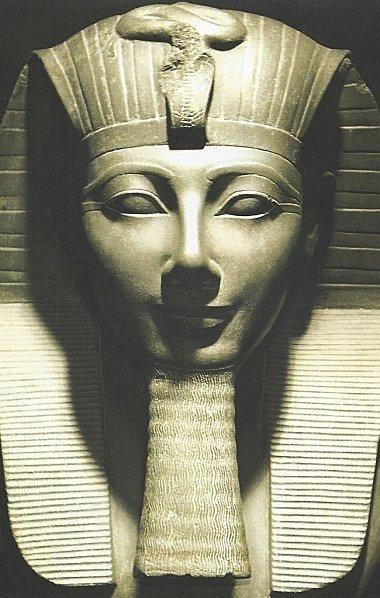
3 notes
·
View notes
Text
Egyptian pharaohs were given five names (including a secret one) which were considered an essential part of their role and destiny. Each name carried the weight of celestial authority, acting as a bridge between mortal existence and the cosmic order
25 notes
·
View notes